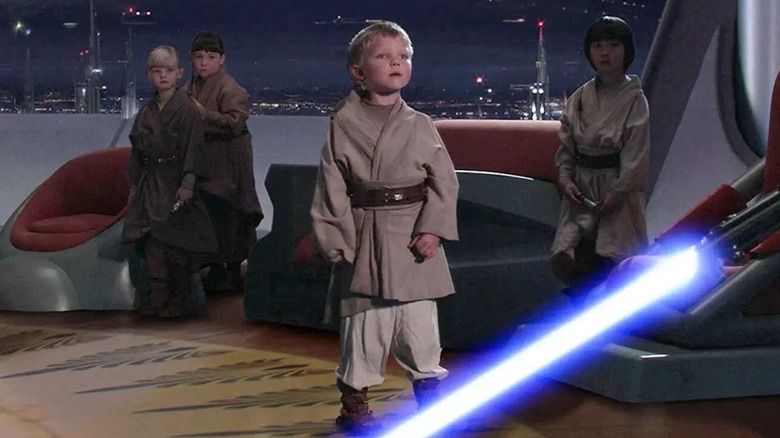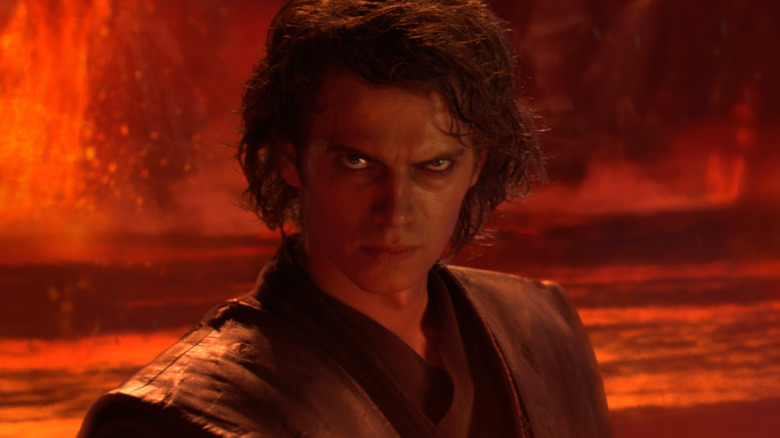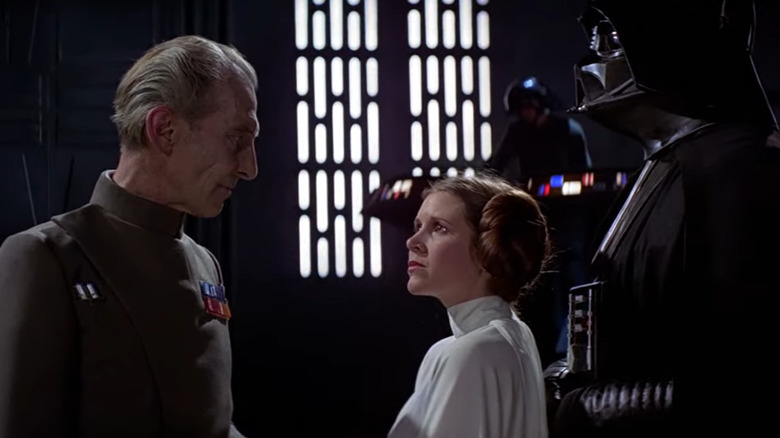Revenge Of The Sith's Original Younglings Massacre Scene Was Too 'Horribly Violent' For Star Wars
There are a lot of reasons why some audiences think the "Star Wars" prequels don't work, but perhaps the biggest is that Anakin's turn to the dark side isn't all that convincing. There's no hint of Vader at all in "The Phantom Menace," then suddenly Anakin becomes a weird, creepy sociopath in "Attack of the Clones." Then George Lucas seemed to remember that Anakin's transformation into Vader was supposed to be a tragedy, so at the start of "Revenge of the Sith," he went back to giving us a version of Anakin that was somewhat likable.
What should've been a gradual descent into villainy over the course of three movies is instead all packed into a single film, which means Anakin's turn feels insanely rushed. He goes from a genuinely good guy worried about the safety of his pregnant wife to somebody who commits premeditated mass child murder in remarkably little time. The scene where the kids realize they're about to get killed by a trusted figure is absurdly dark, so dark it loops back around to being kind of funny: the Prequel Memes subreddit has gotten quite a lot of mileage over it throughout the years.
But for those invested enough in the film to find the scene genuinely disturbing, there's at least some comfort to be taken from the fact that Anakin's child massacre is only implied, not shown. Anakin turns on his lightsaber, we see the scared faces of the children, and the movie cuts away. We don't need to see anything more. In the original plan for the movie, however, we did see what happens next, at least partially.
Not shying away from Anakin's evil
The stunt coordinator for the film, Nick Gillard, spoke to Tatooine Times in 2020 about how the movie was originally a bit more explicit when it comes to all the child murder stuff. "We went into Hayden's garage the night before we were going to shoot the scene and made it so violent," he said. "It was horribly violent. You can't see it, but [Anakin] stabs a little girl through her throat."
It's the sort of thing that makes Anakin's appearance as a Force ghost at the end of the "Return of the Jedi" feel a little less warm and fuzzy. Yeah, Vader saves his son's life and redeems himself by betraying Emperor Palpatine, but it would still feel like he has a lot more to atone for before his spirit can happily hang out with the others. Admittedly, this moment never felt completely earned either way, but it would ring even more hollow if "Revenge of the Sith" had actually shown us Anakin brutally killing a little girl.
It's nice that, in a rare moment of creative restraint, Lucas decided to cut the scene down. As Gillard explained, "It was so violent that they ended up shrinking it into a hologram... When we showed George he went, 'Oh, dear.'" The hologram scene didn't make it into the final film either.
In terms of the actual events that happen, "Revenge of the Sith" may very well be the darkest entry in the entire "Star Wars" franchise. As to whether the film successfully hits that dark tone, that's a bit more debatable. It's easy to make fun of how quickly Anakin spirals into evil, but the movie does deserve some credit for understanding, in this scene at least, that the implication is often scarier than the real thing.
That other time George Lucas showed restraint
The decision to spare us the sight of murdered younglings is reminiscent of the scene in "A New Hope" where Vader blows up Leia's home planet, Alderaan. It's another moment that, if you dwell on it longer than the movies chose to, would seriously undercut Vader's eventual redemption. Vader sort of makes things right with Luke, sure, but how could he possibly make things right with his daughter?
Alderaan's destruction could've been a big, melodramatic moment. If Lucas had a larger budget at the time, it's easy to imagine a version of "A New Hope" where the film cut to a street-level view of Alderaan, showing us all the men, women, and children that presumably lived there before their untimely deaths. Instead, we only see the destruction from space, so far away that the human toll isn't visible. The audience is left to imagine what the people of Alderaan were like, and to imagine the sheer extent of Leia's grief.
It's a restrained storytelling choice that establishes Vader as a dangerous villain in the moment but avoids being so disturbing that it's still lingering in our minds during Luke and Vader's final heart-to-heart. Anakin commits plenty of war crimes once he turns to the dark side, but Lucas always knew to keep the worst of them implied.


